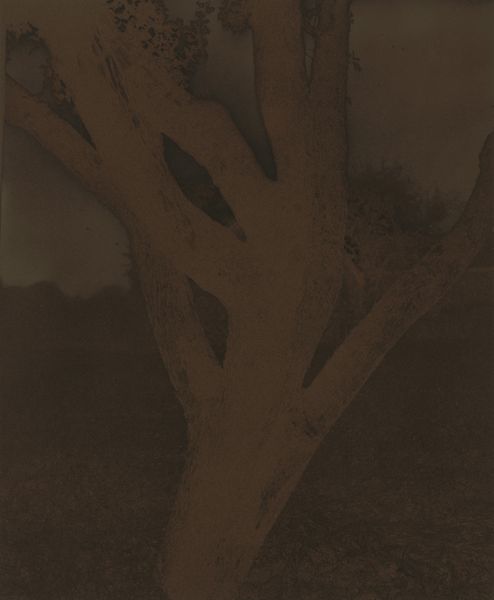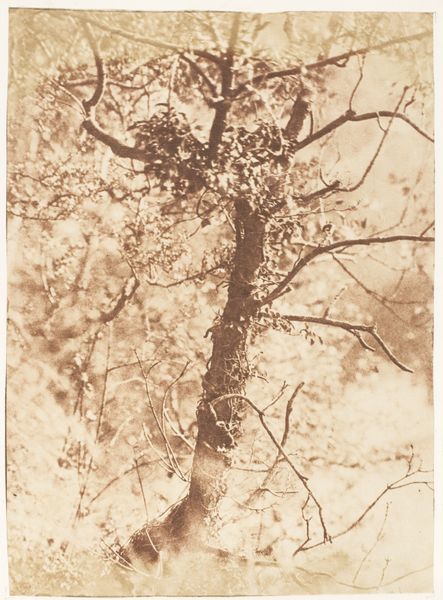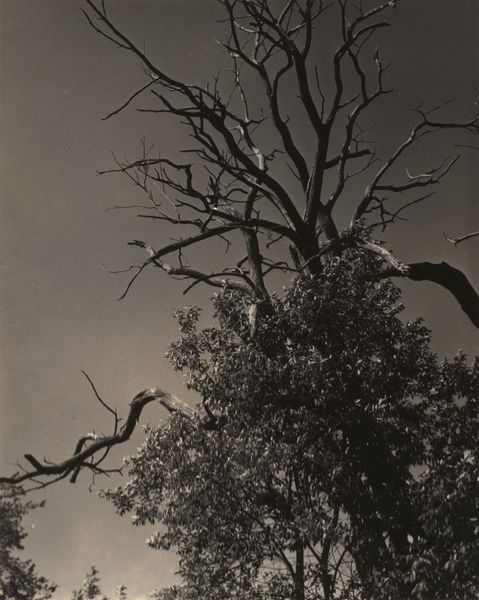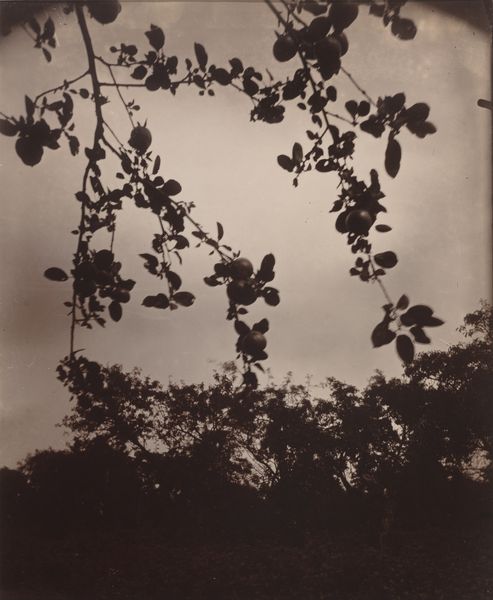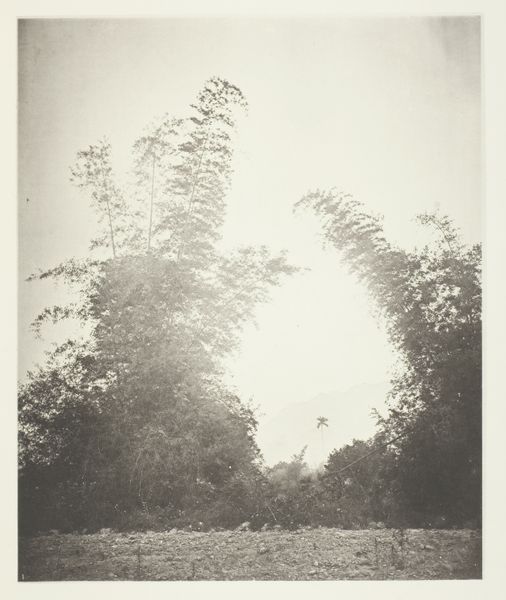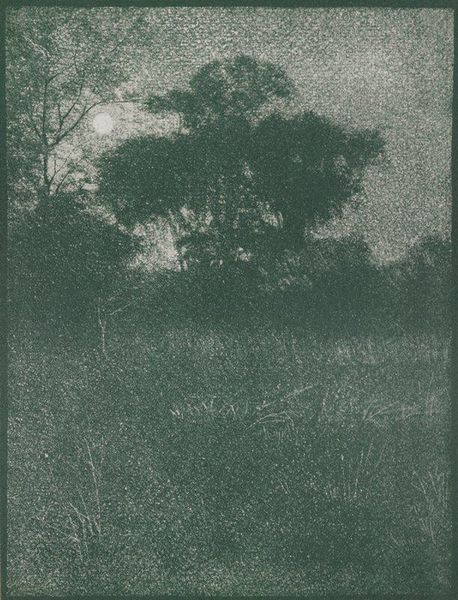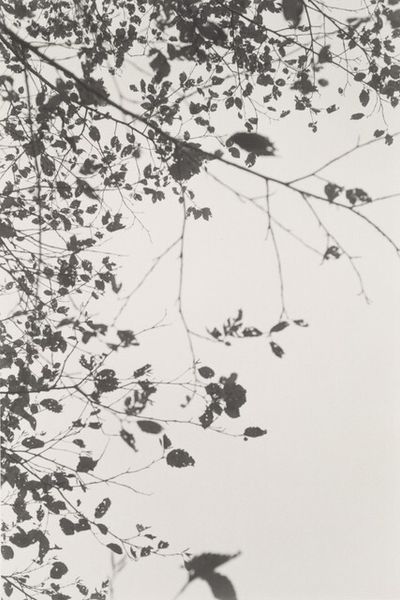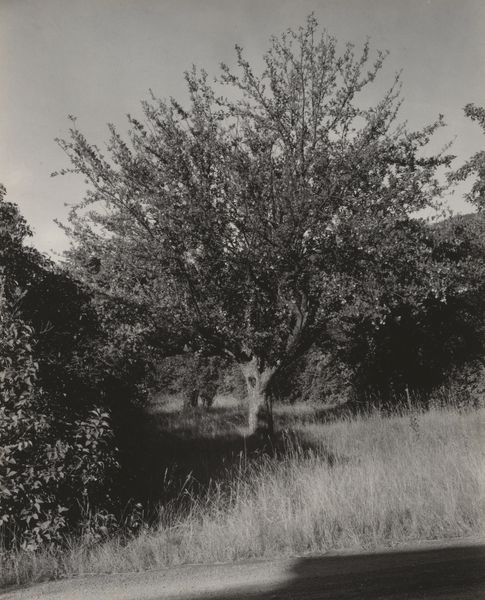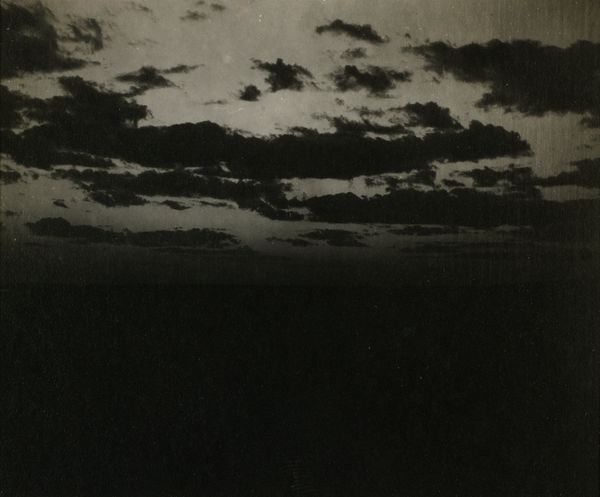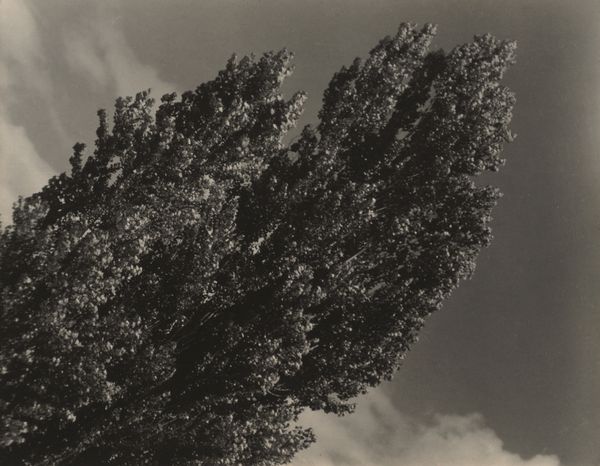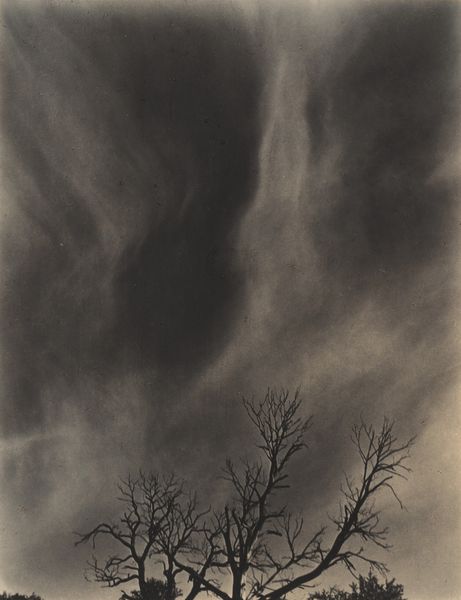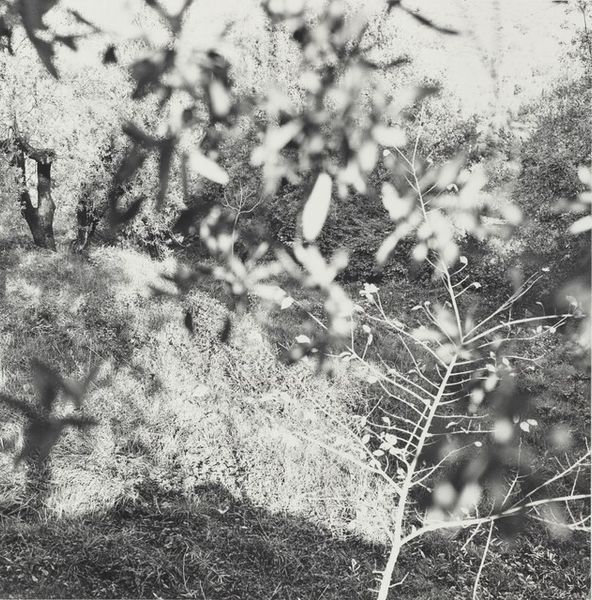
Dimensions: sheet (trimmed to image): 23.6 × 17.9 cm (9 5/16 × 7 1/16 in.) mount: 56.4 × 45.5 cm (22 3/16 × 17 15/16 in.)
Copyright: National Gallery of Art: CC0 1.0
Curator: Right, let’s delve into this photograph by Alfred Stieglitz, most frequently called “Plum Tree, Lake George or Rain Drops, Apple Tree," taken around 1920. Editor: Immediately, it feels so…misty. Like a memory trying to surface through the fog. All these muted sepia tones really soften the entire scene. Almost feels like an early dream, hazy in its details and somehow profoundly melancholic. Curator: Yes, and that haziness is very deliberate. Stieglitz was a leading figure in Pictorialism, a movement that aimed to elevate photography to the level of art by using soft focus and manipulating the printing process to mimic the look of paintings and prints. Think Impressionism, but with a camera. Editor: It really does carry that painterly quality, doesn't it? But, more than a scene, I see Stieglitz really digging for feeling here. He's reaching into this solitary plum tree, wanting us to feel that quiet observation of nature. Makes you wonder what personal meaning these particular trees had for him. Curator: Lake George, where he spent considerable time, held deep personal significance, acting as both a source of inspiration and a place for him and his family to find creative renewal. Remember, Stieglitz championed photography not just as a medium for documentation, but for subjective expression. His cloud series, the "Equivalents," makes that very clear. Editor: Exactly. It's never JUST about the tree or the lake, it's a mirror reflecting back at him, and us. He's trying to freeze a fleeting emotional state. The framing of this tree—so central and almost vulnerable against a diffused background, asks "What feelings do you see in it? How do you relate to it?" Curator: I'd say a central achievement of Stieglitz in photographs like this is, how well they document modern society's rapidly growing need to relate and feel connected to a landscape already being industrialized in his lifetime. The choice to print this using the photogravure process added texture and depth. A beautiful demonstration of Stieglitz's dedication to creating photographs with real presence. Editor: For me it is more about presence and also patience: I look at it and get the need to stand still, listen to your heartbeat and wait. If only we could grasp those quiet moments these days! I'll leave feeling like Stieglitz told us something very personal here, inviting me to share in this introspective dance between subject and artist. A quiet whisper captured forever in a moment. Curator: Absolutely, and he pushed our understanding of photography's artistic limits. By presenting scenes charged with individual emotion, Stieglitz ensured the legacy of the medium as one of art's valuable and accessible avenues for artistic exploration.
Comments
No comments
Be the first to comment and join the conversation on the ultimate creative platform.
